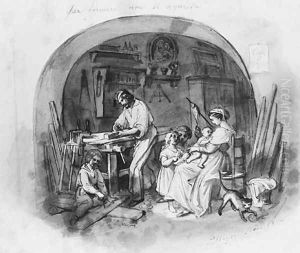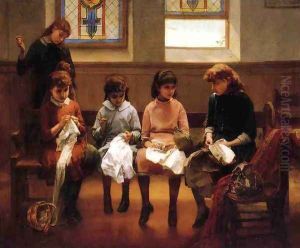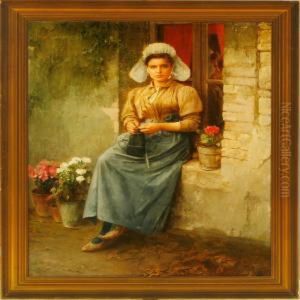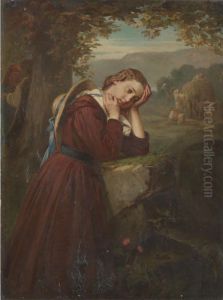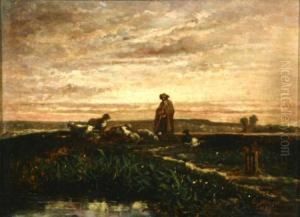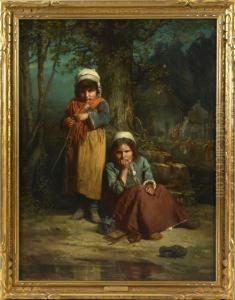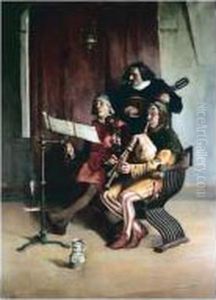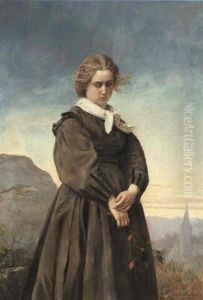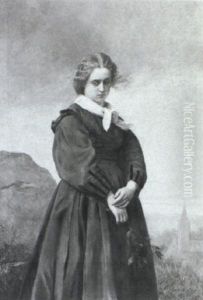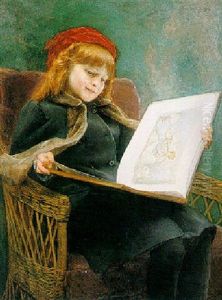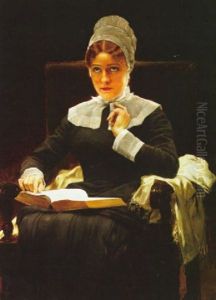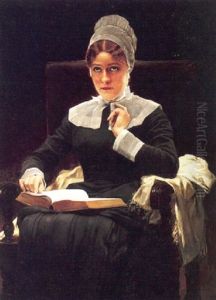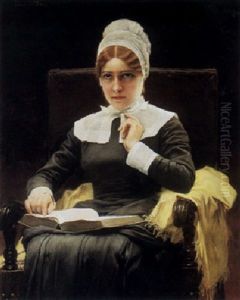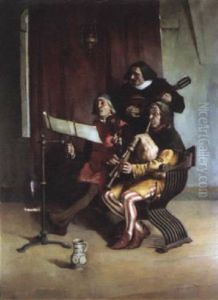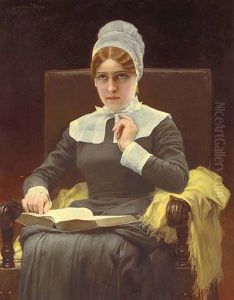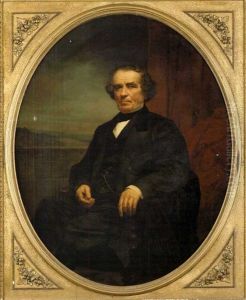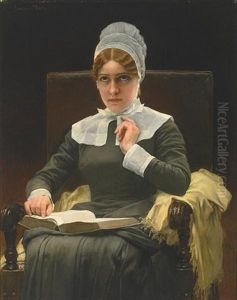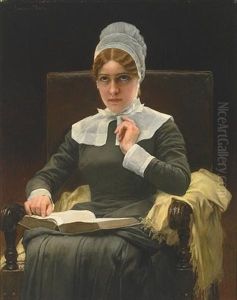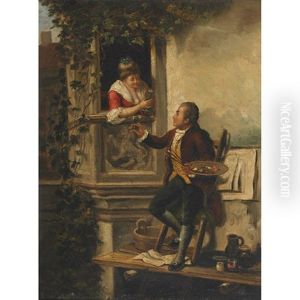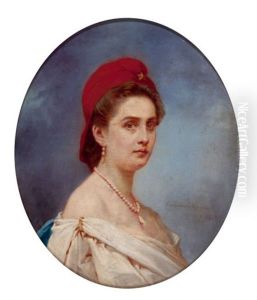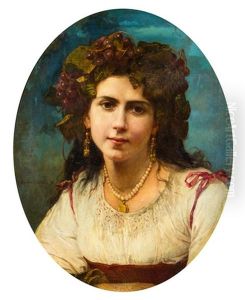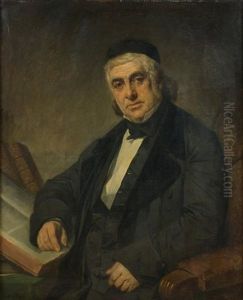Constant Mayer Paintings
Constant Mayer was a French-American artist known for his work as a painter, particularly within the genre of portraiture and historical scenes. Born in Besançon, France, on October 3, 1829, Mayer demonstrated an early interest in art. Seeking to develop his skills, he studied at the École des Beaux-Arts in Paris under influential instructors such as Léon Cogniet. His time in Europe allowed him to absorb the classical and Romantic influences prevalent during the mid-19th century.
Mayer's work was recognized in France, and he exhibited at the prestigious Paris Salon, which was the official art exhibition of the Académie des Beaux-Arts in Paris. His success at the Salon helped establish his reputation as a skilled painter. In search of new opportunities and inspired by the burgeoning art scene, Mayer emigrated to the United States in the 1850s, where he continued his career and became a part of the American art movement.
Settling in New York, Mayer became actively involved in the National Academy of Design and was elected as an associate member in 1861, later becoming a full member in 1863. His American period was marked by works that often depicted scenes from American history, as well as portraits of notable figures of his time. He was particularly recognized for his contribution to Civil War-related subjects, capturing the emotional depth and the human aspects of the conflict. His painting 'Recognition: North and South', exhibited in 1865, is an example of his Civil War era work, portraying a poignant moment of reconciliation between soldiers from opposing sides.
Throughout his career, Mayer continued to exhibit his work in both the United States and Europe, earning medals and accolades for his artistic contributions. His style combined the academic precision he learned in France with a narrative quality that appealed to the tastes of his American audience. Mayer's portraiture also exemplified his ability to capture the character and status of his sitters, which included many prominent figures.
Constant Mayer's contributions to the art world were significant during his lifetime, and his works continue to be appreciated for their historical value and artistic merit. He passed away on May 12, 1911, in Paris, France, where he had returned late in life. His legacy is preserved through his paintings, which can be found in various art collections and museums across the United States and Europe.
